Quotient: Explanation and Study Guide
What is a Quotient?
A quotient is the result of dividing one quantity by another. In division, the quotient is the number of times one number (the divisor) can be divided into another number (the dividend) without leaving a remainder.
How to Find the Quotient
To find the quotient of two numbers, you can use long division or the division symbol. For example, to find the quotient of 14 ÷ 3, you would divide 14 by 3 to get a quotient of 4 with a remainder of 2.
Study Guide
Here are some steps to follow and tips to keep in mind when working with quotients:
- Understand the terms: Make sure you know what the dividend, divisor, and quotient are in a division problem.
- Practice long division: If you're using long division to find the quotient, practice dividing larger numbers to improve your skills.
- Check for remainders: Remember that the quotient may not always be a whole number, as there could be a remainder left over after division.
- Use the division symbol: When dividing smaller numbers, you can use the division symbol to find the quotient quickly.
- Apply to real-life situations: Look for opportunities to use division and quotients in everyday situations, such as sharing items among friends or splitting up a group into equal parts.
By understanding the concept of quotient and practicing division, you can become more confident in working with quotients and dividing numbers.
.◂Math Worksheets and Study Guides Fifth Grade. Common Factors
Study Guide Common Factors
Common Factors  Worksheet/Answer key
Worksheet/Answer key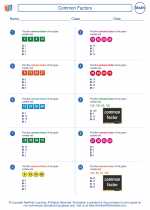 Common Factors
Common Factors  Worksheet/Answer key
Worksheet/Answer key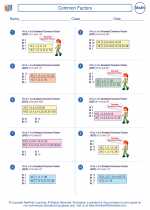 Common Factors
Common Factors  Worksheet/Answer key
Worksheet/Answer key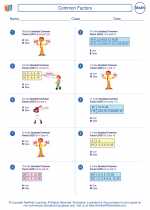 Common Factors
Common Factors  Worksheet/Answer key
Worksheet/Answer key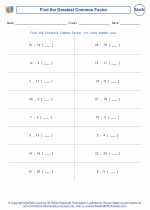 Greatest Common Factor of numbers not greater than 24
Greatest Common Factor of numbers not greater than 24  Worksheet/Answer key
Worksheet/Answer key Magic Squares
Magic Squares  Worksheet/Answer key
Worksheet/Answer key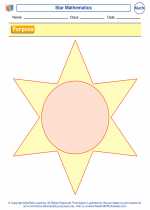 Star Mathematics
Star Mathematics  Vocabulary/Answer key
Vocabulary/Answer key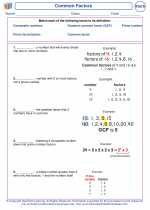 Common Factors
Common Factors 

 Worksheet/Answer key
Worksheet/Answer key
 Worksheet/Answer key
Worksheet/Answer key
 Worksheet/Answer key
Worksheet/Answer key
 Worksheet/Answer key
Worksheet/Answer key
 Worksheet/Answer key
Worksheet/Answer key
 Worksheet/Answer key
Worksheet/Answer key
 Vocabulary/Answer key
Vocabulary/Answer key

The resources above cover the following skills:
Algebra (NCTM)
Use mathematical models to represent and understand quantitative relationships.
Model problem situations with objects and use representations such as graphs, tables, and equations to draw conclusions.